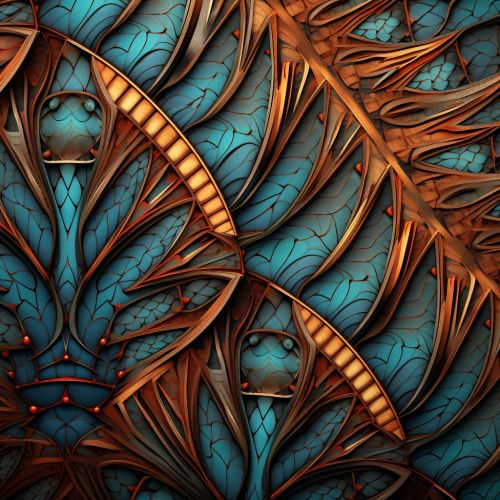Fractal Geometry
Introduction
Fractal geometry, a branch of mathematics, is a form of graphical representation of mathematical functions or set of numbers generated by a mathematical function. The term "fractal" was coined by mathematician Mandelbrot in 1975, derived from the Latin word "fractus", meaning "broken" or "fractured". A fractal is a never-ending pattern, infinitely complex and self-similar across different scales. They are created by repeating a simple process over and over in an ongoing feedback loop.
History
The concept of fractal geometry predates the term itself. Mathematical thinkers have been intrigued by the iterative processes and infinite complexity for centuries. The study of fractals traces back to the 17th century, with mathematicians like Leibniz who considered recursive self-similarity. In the 19th century, mathematicians like Weierstrass, Cantor, and Poincaré began to study functions and sets which were not differentiable, but were nonetheless interesting. These objects were treated as curiosities, and the term "fractal" was not yet in use.
Definition
Formally, a fractal is a set of points in a space with a fractal dimension that exceeds its topological dimension. Fractals are characterized by a high degree of roughness or irregularity, and they exhibit self-similarity, meaning they appear identical at any scale. This property makes them a useful model for many physical phenomena, from the distribution of galaxies in the universe to the structure of the internet.
Characteristics
Fractals have unique characteristics that set them apart from other geometric shapes. These include:
- Self-Similarity: This is the most identifiable characteristic of a fractal. It means that the fractal appears the same at any scale. If you zoom into the image of a fractal, you will see the same level of detail as before.
- Complexity: Fractals are infinitely complex. This means that no matter how much you zoom in, you will always find new details.
- Fractal Dimension: Unlike regular geometric shapes, fractals aren't confined to a certain dimension. They can have dimensions that are non-integer, which is a concept that doesn't apply to traditional geometry.
Types of Fractals
There are several types of fractals, each with their own unique properties and characteristics. Some of the most well-known fractals include:
- Mandelbrot Set: Named after Benoit Mandelbrot, the Mandelbrot Set is a set of complex numbers that remains bounded when iterated under a certain function.
- Julia Set: Similar to the Mandelbrot Set, the Julia Set is defined by a function, but unlike the Mandelbrot Set, it does not remain bounded.
- Sierpinski Triangle: This is a fractal that is made up of an infinite number of smaller triangles.
- Koch Snowflake: The Koch Snowflake is a fractal that begins as an equilateral triangle and then replaces the middle third of each line segment with a pair of line segments that form an equilateral "bump".


Applications
Fractal geometry has found applications in various fields of science and technology. Some of the key applications include:
- Physics: Fractals are used to model diverse physical phenomena such as crystal growth, fluid turbulence, and galaxy formation.
- Computer Graphics: Fractals are used in computer graphics for generating textures and natural-looking landscapes in video games and movies.
- Biology: Fractal patterns are prevalent in nature and biology, from the branching of trees and veins to the shape of seashells and snowflakes.
- Medicine: Fractal analysis is used in studying and diagnosing diseases like cancer, where the irregular growth patterns of malignant cells often exhibit fractal properties.
- Telecommunications: Fractal antennas, based on fractal geometry, are used in wireless devices due to their wide bandwidth and small size.
Conclusion
Fractal geometry, with its intricate beauty and infinite complexity, has revolutionized our understanding of the world and the universe. Its applications are vast and varied, making it an essential field of study in mathematics and science. Despite its complexity, the study of fractals opens up a world of understanding about the patterns that make up the world around us.
